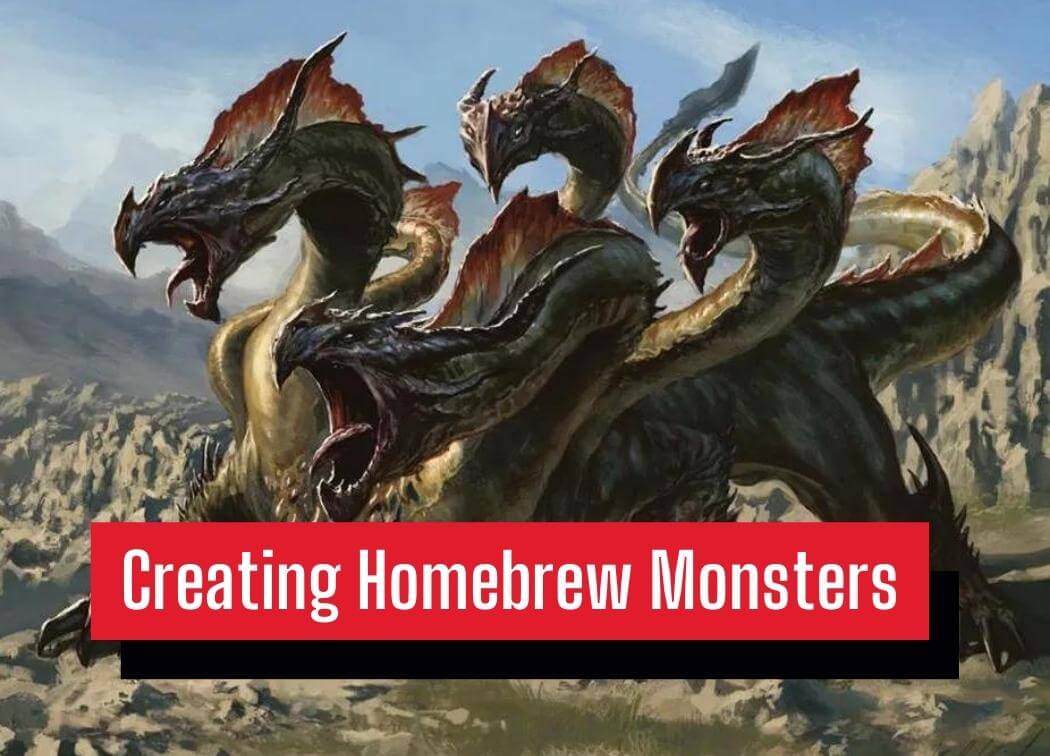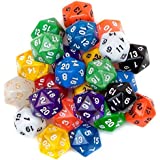Creating Homebrew Monsters

One of my favorite things about 5e is how simple it is to create your homebrew monsters. Most of the time I will use this to create boss monsters, but you can homebrew just about any sort of monster you can imagine. The most challenging part about homebrewing anything is ensuring that it is properly balanced. The last thing that you or your players want to deal with in a game is an overpowered monster. Do note that there is a HUGE difference between challenging or difficult and overpowered.
So, let’s go through the design process I use when I’m making a monster. I like to break a big project like this into smaller, more specific tasks. I made a post a while ago about the software I use to make homebrew monsters if you’re interested in that sort of thing.
Step 1: Purpose
This step is by far the most important part of the design process. Every time you create something you should have a goal in mind for it. Homebrew monsters should each serve a specific purpose. Here are a few examples of the purposes I usually have for creating a new monster.
Is it an idea that you have that isn’t replicated anywhere in the monster manual? This is probably the most common purpose one will have when creating a new monster. A lot of people will also take monsters that were in earlier additions or different tabletop games and convert them to the game that they are currently playing. This would fall under this sort of purpose, but it is a bit easier to get a solid start on since you have a reference for what you want the monster to do.
Is it a monster that is intended to be a boss? I use this one a lot when I’m homebrewing a monster. Say the party is doing a quick quest in a Kobold Den. Maybe the Kobold Chieftain has some magical powers or additional abilities that a regular Kobold would not have. This is generally more of a tweaking/re-balancing project, but it could still be considered homebrew if you change a lot or add a few abilities.
Do I just have a great idea for something unique and want to spend some time trying to make it work? Homebrewing for the fun of creating your monsters is a perfectly good reason to do this as well! Generally when I do this sort of homebrewing it’s more of a “Back Burner” project where I won’t make it a priority but go and add to it when I have a good idea.
There are other reasons you may want to create a unique monster, but these are a few of the more common purposes that I use to begin my work on a new creature.
Step 2: Description
This is a big one for creating a creature that you intend to use in a current or future campaign. What does the creature look like and where would you find it? These are the two big questions that will help you flesh out the rest of your ideas. Let’s do a quick example to show what I’m talking about here.
One of the campaigns that I’m currently running takes place in the Underdark. The monster I want to create for this campaign would most likely be native to the Underdark which means it would have some sort of Darkvision or Blindsight to effectively navigate its terrain. A lot of the creatures in the Underdark are extremely hostile and are predatory so this creature will probably try to hunt down the party perhaps in a pack or a small group of other creatures.
While that’s a super basic description, I think it conveys the message I’m trying to get across for this part of my design process. I have my intention of what I want the creature to do and where it lives. The creature’s environment will shape some of the features of the creature as it would have to have adapted to the said environment to survive there. It wouldn’t make sense for a creature to be native to the Underdark but it cannot see in the Dark and has no Blindsight or Truesight or anything of that nature.
Step 3: Difficulty
If you’re creating a monster with a specific campaign in mind, you’ll want to figure out the appropriate Challenge Rating (CR) of the monster that you’d want to make. In case you don’t know this off the top of your head I found this great calculator that lets you figure out the appropriate experience or CR of the encounters you should be using for your campaign.
A good tip that I usually use is that once you figure out a CR that you want the creature you’re creating to go through the monster manual and find a few monsters with the same CR that you’ve selected. Look at all of the stats it has, look at the damage output that it does, and look at the average hp/AC the creatures have.

Your creature does not have to be in line with all of these, but there is an average amount for each CR and you should attempt to stay within that average for stat distribution, HP, AC, and damage output. Now HP and AC directly correlate. A monster with more AC will generally have less HP than monsters with the same CR with less AC.
Once you have this in mind we’ll start fleshing out the mechanics!
Step 4: Mechanics
This is the part where we nail down exactly what this monster does. Does it have any sort of passive abilities? Legendary Actions? What attacks does it do? How many attacks does it get per turn? Does it have any Reactions? Can it cast spells? Does it have resistance to specific damage types? What about vulnerabilities? These are the things you’ll have to figure out. Most creatures will not have every single one of these mechanics. Conversely, a boss or a high CR creature may have most of these types of mechanics in its arsenal.
The mechanics of the monster is the meat of the whole design process and will most likely be the part that you spend the most time on. For the first couple of creatures, you create find similar abilities to base your mechanics around. This teaches you what is or is not a balanced ability for a particular CR. There is no shame in learning.
This section is also highly dependent on the CR of the creature. For example, low CR creatures will not have many different attacks, or if they do have Multiattack then it would be very low damage. On the other hand, a monster with a high CR could potentially have multiattack, spells, and unique abilities.
Once you’ve gotten everything ironed out it’s time to try it out in a game. If you’re super focused on getting it “right” run a test run against yourself or have a few friends over and try it out together. One-offs can be great fun and can be as in-depth as you and your friends want it to be.
Step 5: Balance
After you’ve tried the creature out against an appropriately leveled party think about what happened during the encounter. Was it an appropriate challenge for the party? If not maybe consider tweaking the damage dice, bonus damage, or the stats themselves. The same thing goes for if the creature was outputting too much damage.
This is the most challenging part of the design process. It takes time and testing to perfect homebrew. One of the most important parts of creating something is knowing when and how to fix it. It’s rare to be 100% correct about homebrew on the first attempt!
Conclusion
Creating homebrew can certainly be fun for you as a DM and even for the players. Having something completely new thrown at you can be fun. Homebrew creatures also prevent any meta-gaming since no one at the table knows what it’s capable of. Try not to go overboard if you’re new, but don’t be afraid to give it a go. If you do screw up and accidentally throw something completely bonkers OP at your party make note of it and correct the mistake.
I encourage you to try out homebrewing and being creative a bit creative. Keep your ego in check and have an open mind about your creations!
